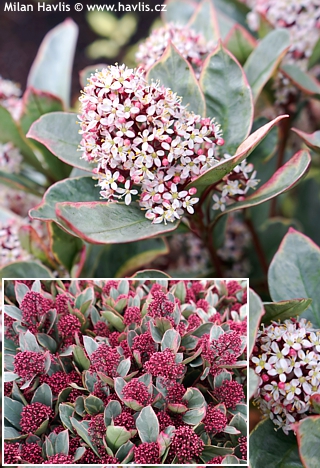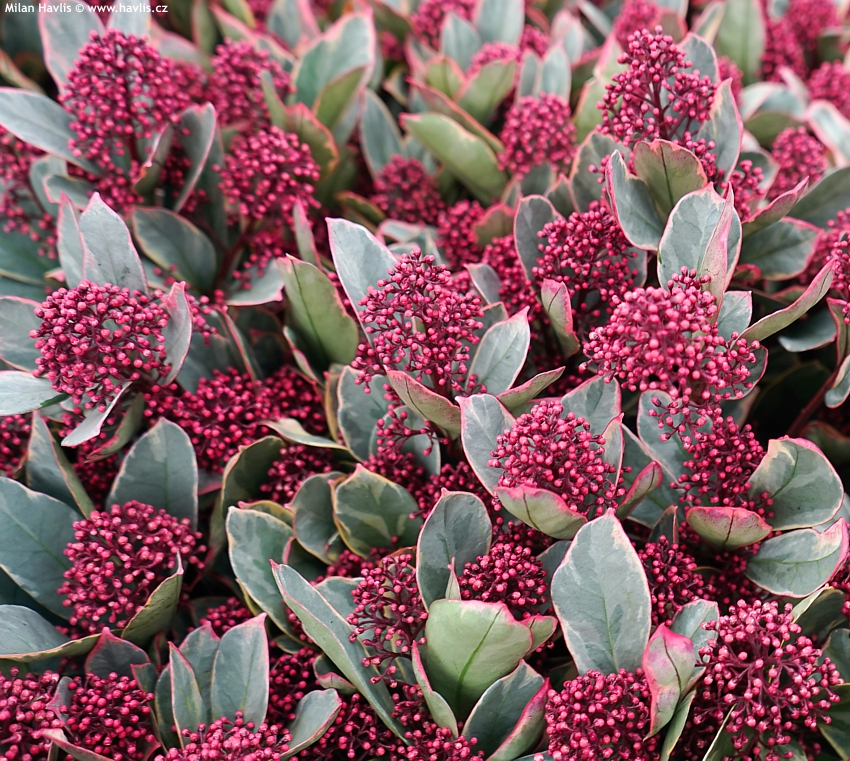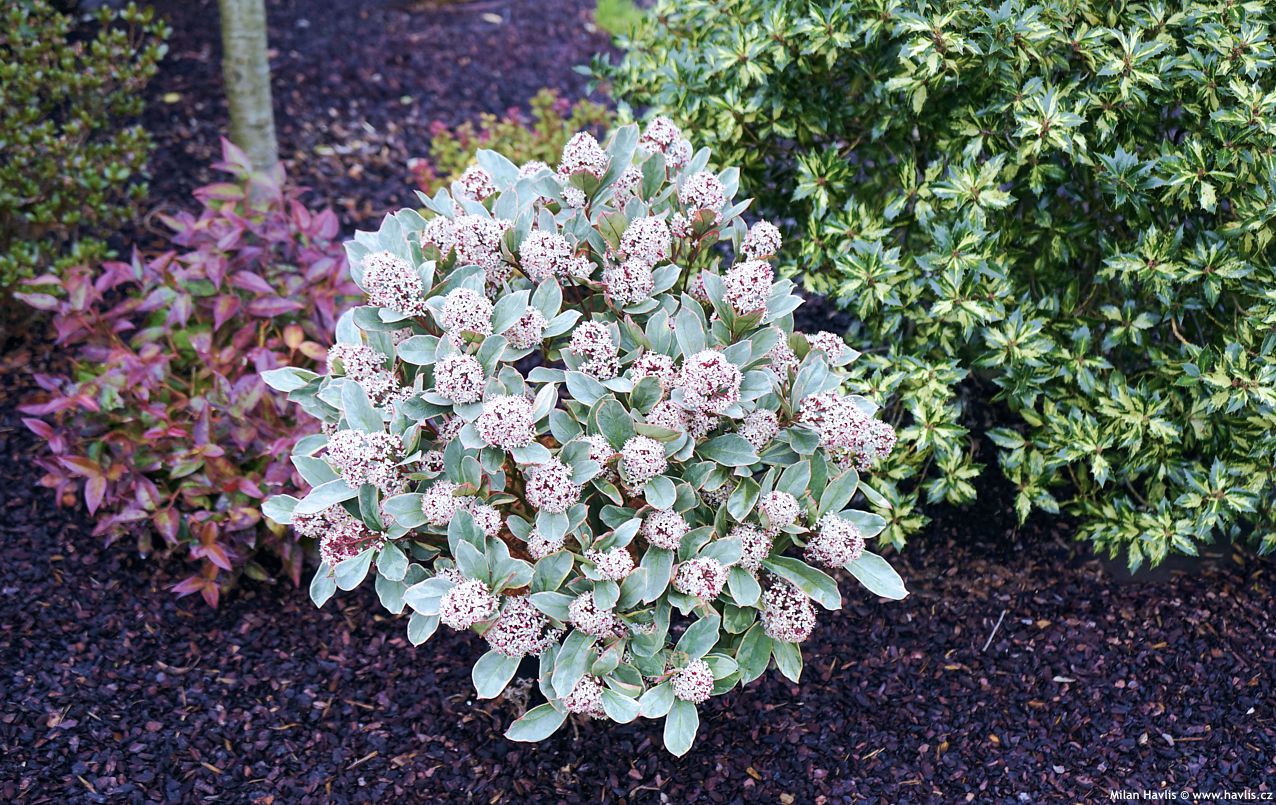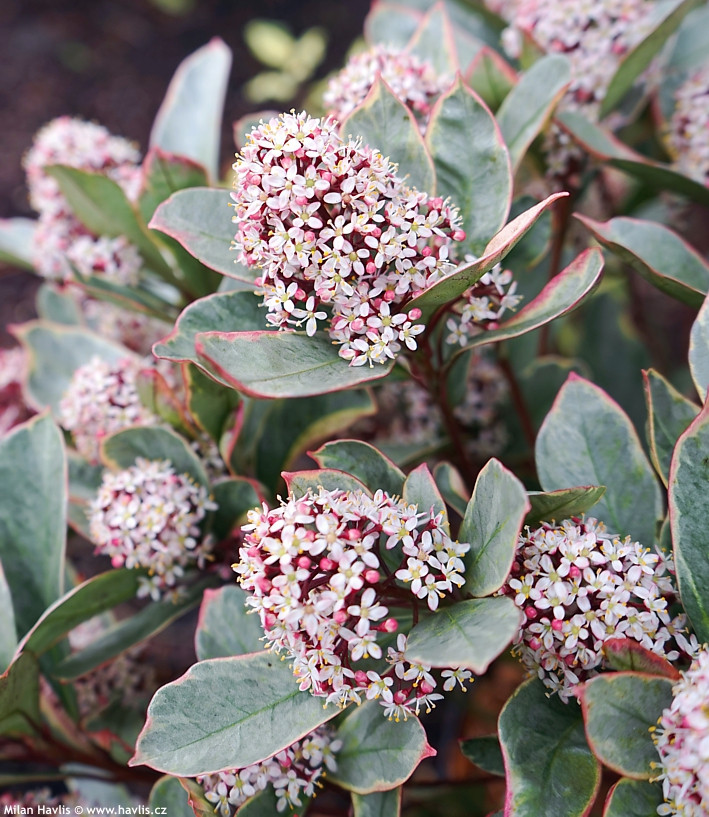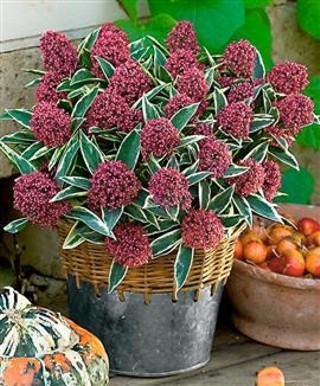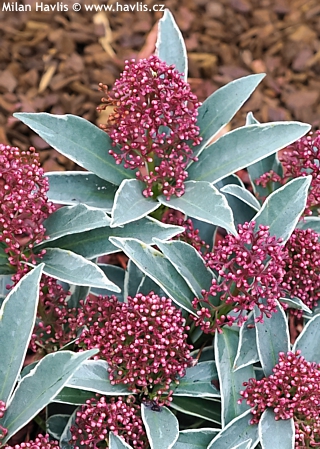Skimmia japonica 'PEROSA' Japanese skimmia
Skimmia
Skimmia is a small, evergreen shrub from Japan. After the year 2000 there have been a number of new varieties which are still being tested for stability of their featured characteristics. The aim is to select plants distinctly different from the species. They are usually split by sex: profusely flowering male plants, and attractive fruit producing female plants. Varieties also differ from one another by habit, and lately also leaf colour, respectively its variegation.
In 2017 Dutch grower T.C. van Eijk comes with a gorgeous new variety of Japanese skimmia with variegated leaves. There have been a few skimmias with variegated foliage already but they are dwarf. Perosa is not and though it exhibits dense and compact growth its leaves are comparable in size with the species or perhaps a bit larger. They are 10-14 cm long, 4-5 cm wide, evergreen, leathery, narrowly ovate, and quite irregular in shape, acuminate, pale green with random silver marbling, and almost white edges. In autumn, all white parts turn bright pink which makes a stunning display along with deep maroon flower buds which lasts until spring before the flowers open.
Flowers are tiny, white with pink tones, composed in terminal racemes, and intensely fragrant – almost like lilacs. Perosa is a male, non-fruiting variety but a great pollinator for all female skimmias producing berries in late summer. It grows slowly into a mounding shrub about 50 cm tall and twice as wide. European patent No. EU45793 was granted in 2017.
If you plant it well you needn’t look after it any longer except for occasional watering in dry spells. There are a few rules you have to follow if you want your skimmia look perfect: the soil has to be always moist but extremely well-drained, acidic (add peat), light (add leaf mould), and most of all humus-rich. The best location is dappled shade or even deep shade (shady back of your house or under thick canopies of tall trees). When leaves turn pale or even yellow the plant suffers from too much sun or water, or too little nutrients in the soil.
Skimmia is tolerant of atmospheric pollution which makes it an ideal choice for urban landscapes. Being suitable for all-year-round cultivation in outdoor pots it is widely used by trendy restaurants and cafes as a decoration of their outdoor seating areas where thanks to its compact habit it does not take up space. Just avoid sunny locations. The plant is poisonous. It is hardy to about -25°C (USDA zone 5b-6).
Last update 27-11-2020

































